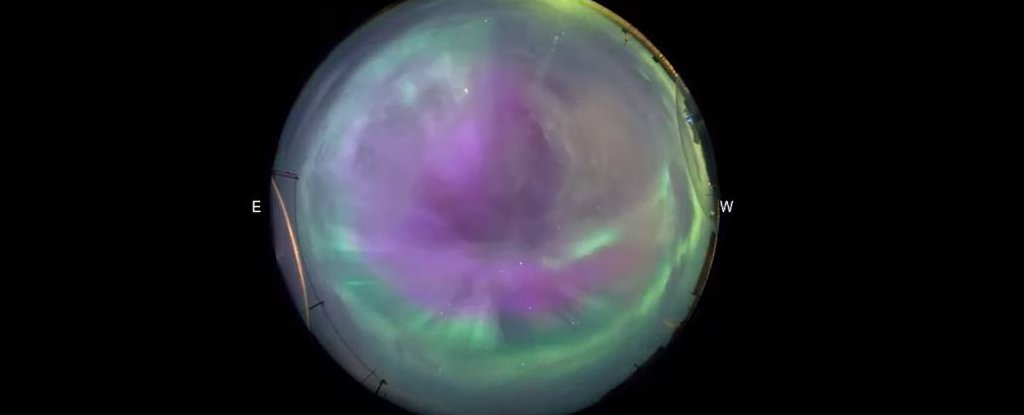Products You May Like
Vivid green and purple auroras swirled and danced across the entire night sky in Sweden recently.
The night-time light show was captured by an all-sky camera in Kiruna, Sweden, which is part of the European Space Agency’s (ESA) Space Weather Service Network.
This camera is pointed straight up, and is fitted with a fish-eye lens to be able to capture the sky from horizon to horizon. The Aurora Borealis, also known as the Northern Lights, were visible due to the impact of a coronal mass ejection (CME) into our planet’s magnetosphere on October 12.
A solar storm on the Sun ejected a ejected a violent mass of fast-moving plasma into space on October 9, 2021. A few days later, auroras were seen around the world in the northern hemisphere.
“What I love about this video is the chance to see this beautiful, purple aurora, more clearly visible during intense geomagnetic storms,” said Hannah Laurens, a Space Weather Applications Scientist based at European Space Operations Center (ESOC).
“The movement of this swirly structure in space and time is often referred to as auroral dynamics.”
Laurens explained how the aurora is a manifestation of complex drivers operating in the distant magnetosphere which makes it a useful, and beautiful, tool with which to monitor space weather conditions.
But being able to study the auroral dynamics is especially important when studying the relationship between the ionosphere and magnetosphere, which are linked by lines of magnetic field.
Various spacecraft keep an eye on the Sun: the Solar Dynamics Observatory, the Parker Solar Probe and Solar Orbiter are just some of the tools scientists use to learn more about our star and how it affects our planet.
Observatories on the ground, like all-sky cameras, are also vital to understanding the complex, and sometimes hazardous interactions between the Sun and Earth.
A preliminary look at the eruption from the M1.6 solar flare with the help of SDO and STCE/SIDC.
We see a gorgeous eruption which very likely launched an earth-directed CME into space. More info will come later when coronagraph imagery becomes available. pic.twitter.com/1aCUAQGILK
— SpaceWeatherLive (@_SpaceWeather_) October 9, 2021
All-sky cameras have operated in Kiruna since the International Geophysical Year 1957-1958, and a digital all-sky camera has been in operation since 2001. The Kiruna Atmospheric and Geophysical Observatory (KAGO) is part of the Swedish Institute of Space Physics (IRF).
While most of the solar wind is blocked by Earth’s protective magnetosphere, some charged particles become trapped in Earth’s magnetic field and flow down to the geomagnetic poles, colliding with the upper atmosphere to create the beautiful auroras.
This article was originally published by Universe Today. Read the original article.
